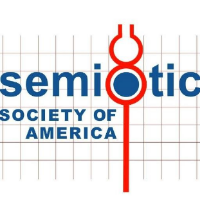We use the science of signs and codes, semiotics, to provide the conceptual algorithms that lie under your computational algorithms.
WE USE GPT-4 and PEIRCEAN SEMIOTICS TOGETHER TO DO WHAT COMPUTERS CAN’T DO ALONE.
We Provide ACADEMIC RESEARCH FOR BUSINESS & INDUSTRY
Hire PhD (or MD, JD, or EdD) professors and professionals ( just one consultant or a team of consultants) to bring the insights and power of university research to your business or industry! We consult (do research, problem-solving, and product development), but we also give seminars and workshops for business leaders and their teams and staff. Dr. Coletta also is available for public speaking. See below for rate structures.
Our Twelve Semiotic Services Domains:
(Look below the 12 Icons for brief explanations of each Service Domain)
(1) WRITING (especially Science and Technology Writing), EDITING, PROOFREADING. Our staff of Ph.D.s uses GPT-4 + SEMIOTICS to generate content and industry white papers that can drive your company or agency’s future. We use the science of interpretation, semiotics, to deliver calculated messages that drive profits and success while being sensitive to the social concerns of your clientele.
(2) SEMIOTICS OF MARKETING AND BRANDING. We are cool hunters! And, as such, we are poised to help you track down the hottest branding and marketing techniques and strategies. We can help you create a new brand, remake an old brand, or market your present brand in new ways! Contact us for coaching and products to grow your brand! (See below for contact information.)
(3) DESIGN SEMIOTICS. Not happy with the layout of your business or office? We can help you revision and remake your Servicescape! Contact us for coaching and products to improve your business's control over the many environments (real and virtual / built and natural) upon which it depends!
(4) MEDICAL SEMIOTICS. Contact us for coaching and products to improve the diagnostic success rate for physicians and other health-care providers or to reduce communication errors (and cost) in your medical practice, clinic, or hospital.
(5) SEMIOTICS OF SUSTAINABILITY (SOS). Contact us for coaching and products to take advantage of what Paul Hawken calls "the ecology of commerce." We don't help you "green wash" your business image; we help you to profit from adding a real ecological dimension to what your business does!
(6) AI & SEMIOTICS OF VISUAL INTELLIGENCE (SVI). When GPT-X and semiotics unite, a potent synergy is unleashed. Our E3I2S AI initiative (also known as EI-AI-O, Evolutionary Intelligence-Artificial Intelligence-Online) inputs an Experiential, Evolutionary, and Embodied (E3) perspective into AI, enhancing it with Iconicity (the basis of mimicry and metaphor) and Irony (I2), two aspects of mind with which traditional AI often has the most dificulty. At INT3RP INC, however, our EI-AI-O (Farming Intelligence) Initiative takes Irony and Iconicity (mimicry and metaphor) as the very starting point for growing mind! The "Ah, AI See!" Project and the “Weight and See” Project are the names of our systematic approaches to helping neural networks and autonomous avatars "see" and "feel" better and thus think “weightier” thoughts. After all, when we say, “I see,” we mean “I (AI) understand!” And it is no coincidence either that thoughts are said to have more or less weight, a key to any self-driving car that would hope to be able to discern the differences between a paper bag in the road and a rock. The “Ah, AI See” Project: Stanford professor of cognitive science Fei-Fei Li says, “Understanding vision and building visual systems is really understanding intelligence” (Wired, Marguerite McNeal). Through "feeding" AI neural networks complex visual images based primarily on the semiotic logic of Charles Sanders Peirce, who writes, ‘‘[T]hat every thought is an external sign, proves that man is an external sign," we of the “Ah, AI See” Project hope to help to prove that "AI is an external sign." This, then, is the epistemological basis for helping AI “learn to see” through “feeding” neural networks visual images “from the outside world” (outside in) rather than programming them from the inside out. As McNeal writes in the above-mentioned article, “Today, computers can spot a cat or tell us the make, model, and year of a car in a photo, but they’re still a long way from seeing and reasoning like humans and understanding context, not just content. (A bat on a youth baseball field and at a crime scene has two very different meanings.) ‘The next step for my lab,” Li says, “is to build the cognitive capability we need in fundamental vision tasks like understanding scenes, human behaviors, and relationships, and reasoning and telling stories’.” To this end, our Peircean visual-semiotic-strategies put into play a veritable genome of visual codes: icons, indices, symbols, images in context, images that embody Chomskyan syntactic structures, images that ground the visual dynamics of predator-prey interactions based on the solving by predators of complex visual puzzles by prey species, natural visual irony, images with built-in narratives structures, and image sequences embodying narrative syntax: a kind of cultural DNA of visual signs that allow neural networks to encode themselves from without—so that someday our machines will say, “Ah, I see said the blind man as he picked up his hammer and saw!”—and get it! “Weight and See” Project: As Richard Powers helps readers see (understand) in Galatea 2.0, understanding is an embodied phenomenon. It will be much easier to help a car that drives itself to distinguish between a paper bag in the road and a rock in the road (or the white sky versus the white side of a semi) if the neural network has a sense of weight and space. Thus, despite our prejudice, believing is not just seeing; it is “understanding” the weight(iness) and spatial dimensions of the cognitivized object. To this end, our “Weight and See” staff can advise AI professionals on how best to integrate both visual images and corporeal and spatial signs into their training of neural networks.
(7) SIFT (SEMIOTICS OF INFORMATION TECHNOLOGY). Contact us for coaching and products to improve your office's or business's connectivity to and through the Internet of Things!
(8) CULTURAL SEMIOTICS (How to Be a Real World Robert Langdon, Symbologist, or Sherlock Holmes). Want to be a real-world Robert Langdon or Sherlock Holmes? We have coaching and products to help you in your quest!
(9) LEGAL SEMIOTICS. Contact us for coaching and products to help you disambiguate complex language and meaning in contracts and other legal documents.
(10) FORENSIC SEMIOTICS (invented by professor Marcel Danesi). Contact us for coaching and products to help your detectives track down criminals with a Sherlock Holmesian tenacity and your police officers better decode (and likely defuse)--with the applied rigor of forensic semiotics--the many complex "situations" that they so often encounter.
(11) POLICE AND DETECTIVE INTELLIGENCE (PDI). Contact us for training seminars for your police officers and for your detectives.
(12) GAMING SEMIOTICS. Need help adding a compelling narrative to your videogame, board game. or RPG concept? Need work with the historical context of the virtual world of your game, or with developing your game’s symbolic economy? We got your back!
CONSULTATION RATES
$100 PER HOUR per PhD / MD / EdD, JD (negotiable in some cases)! Hire one professor or professional or two or three. At INT3RP Inc, we are able to send out a single disciplinary expert or a team of PhDs (and MDs or EdDs) representing that mix of expertise that best fits your business or industry’s needs.
Why INT3RP INC?
-
Why does your clinic, office, conference room, or AI laboratory need INT3RP and its teams of writers & consultants (mostly PhD semioticians and professors)? Frankly, the meaning of a patient's symptoms, of an MRI image, of the visual images that researchers "feed" to neural networks and those networks' verbal outputs, of a legal text, of a planning document, of the scene a police officer comes upon, or a corporate logo is not so much in the signs but in how the signs are INT3RPreted! Power comes from one's controlling the process of interpretation: herein lies "The Power of Perspective." Data show that in nearly all industries, from the legal and medical professions to information technology to urban planning, errors in interpretation are widespread.
Semiotics--as a basis for reducing the rate of errors and inaccuracies in interpretations of all kinds--is a rapidly growing discipline.
-
INT3RP "All Around"
Semiotics is the science of signs, of codes, of interpretation, of perspective. And, as "the universe is perfused with signs, if not made up entirely of them," as Charles Sanders Peirce writes, then INT3RP is truly "All Around." All professions, businesses, researchers, programs, or agencies can only be successful, therefore, to the extent that they exercise control over the process of interpretation, of coding and decoding the signs that structure their fields. Formal semiotic training allows clinicians, attorneys, forensic experts, planners, cognitive scientists, and executives to control the codes in which they are immersed instead of having the codes control them. Therein lies "The Power of Perspective."
-
INT3RP INC provides writers, consultants and teams of consultants (mostly PhD semioticians and professors) to help any complex technical or business enterprise--medical, legal, environmental, forensic, IT, AI, marketing and branding--improve on the power and efficiency of what does through the "Power of Perspective" & the “Power of Presentation.” Thus, when you think of INT3RP INC. think: "I can hire a team made up of a virtual Sherlock Holmes and a virtual Robert Langdon!"--that is, of real symbologists or semioticians!
Our Clients,
including those to whom our CEO & Founder, Dr. W. John Coletta,
has provided either professional service or paid consultation as an individual agent.
INT3RP "All Around"
Every complex field (medical, legal, forensic, IT, cognitive science, AI, sustainability studies, marketing and branding) is constituted almost wholly of SIGNS to be INT3RPreted. These signs come in many forms: symptoms, codes, images, clues, symbols, evidence, arguments, logos, data, algorithms, icons, indices, and models. We are immersed in signs; they are all around us. If INTEL is "Inside," then INT3RP is "All around." But these signs are often misinterpreted. In fact, data show that in nearly all industries, errors and inaccuracy are widespread, decreasing efficiency and costing businesses, legal and medical practices, and agencies of all types untold amounts of time and money.=
Interesting Statistics
medicine: Up to 20 percent of medical diagnoses are wrong1;
law: One out of 8 times, juries are wrong2;
marketing and branding: More than 70 per cent of marketers failed to deliver real results to their clients3; and roughly 75 per cent of ads will creatively underperform (regardless of media)4;
forensic science: One-third of murder cases in America go unsolved5; Eleven per cent of individuals involved in police shootings were later found to be innocents misidentified as criminals6;
security: Seven per cent of smartphone users were victims of fraud7;
information technology: More than 65 per cent of people in the country don't download a single application for their smartphones8 . . .[and] only 2.4 per cent of Americans who own smartphones download eight apps or more a month.9
cultural semiotics: A poll conducted for Reuters found that 22 per cent of people worldwide believe the world will end during their lifetime,10 and nearly 40 per cent believe we're living in the end times.11
Our Sources
1Schiff, G. V., Seijeoung, K., Abrams, R., Cosby, K., Lambert, B., Elstein, A. S., . . . McNutt, R. A. (n.d.). Diagnosing Diagnosis Errors: Lessons from a Multi-institutional Collaborative Project [Scholarly project]. Retrieved from http://www.ncbi.nlm.nih.gov/books/NBK20492/?report=printable
2Tremmel, P. V. (n.d.). New Study Shows How Often Juries Get It Wrong. Retrieved February 28, 2016, from http://www.northwestern.edu/newscenter/stories/2007/06/juries.html
3FournaiseTrack – Media Releases. (n.d.). Retrieved February 28, 2016, from https://www.fournaisegroup.com/marketers-got-it-wrong-in-2013/
4FournaiseTrack – Media Releases. (n.d.). Retrieved February 28, 2016, from https://www.fournaisegroup.com/marketers-made-3-effectiveness-mistakes-in-2014/
5Fact: Police are Much More Likely to Shoot the Wrong Person than Armed Citizens. (n.d.). Retrieved February 28, 2016, from https://www.learnaboutguns.com/2009/02/17/fact-police-are-much-more-likely-to-shoot-the-wrong-person-than-armed-citizens/
6(n.d.). Retrieved February 28, 2016, from http://www.forbes.com/sites/davidthier/2012/02/24/study-1-in-20-americans-have-been-victims-of-identify-theft/
710 Data Security Lessons of 2015. (n.d.). Retrieved February 28, 2016, from http://www.americanbanker.com/gallery/10-data-security-lessons-of-2015-1075842-1.html
8Citi Calls Coders to Develop Apps for 'Internet of Things' (n.d.). Retrieved February 28, 2016, from http://www.americanbanker.com/issues/179_186/citi-calls-coders-to-develop-apps-for-internet-of-things-1070231-1.html
9Are you fed up of apps? Almost 66 per cent of smartphone users don't download any. (n.d.). Retrieved February 28, 2016, from http://www.pocket-lint.com/news/130493-are-you-fed-up-of-apps-almost-66-per-cent-of-smartphone-users-don-t-download-any
1022 Percent of Americans Think Know the World Will End in Their Lifetime. (n.d.). Retrieved February 28, 2016, from http://gawker.com/5906856/22-percent-of-americans-think-know-the-world-will-end-in-their-lifetime
11Chumley, C. K. (n.d.). 4 in 10 American adults: We're living in the end times. Retrieved February 28, 2016, from http://www.washingtontimes.com/news/2013/sep/12/4-in10-american-adults-were-living-end-times/

























